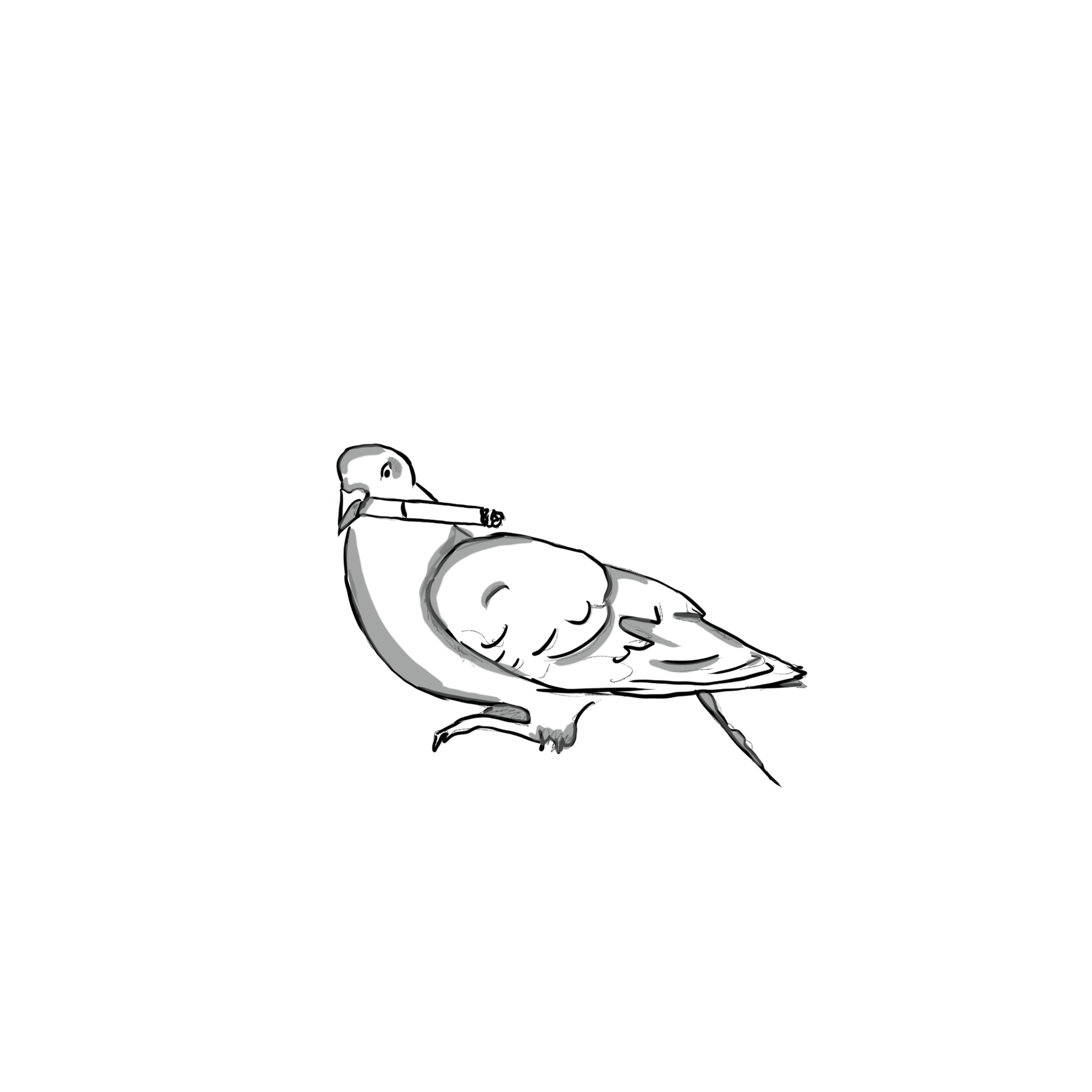to light a cigarette in an italian piazza
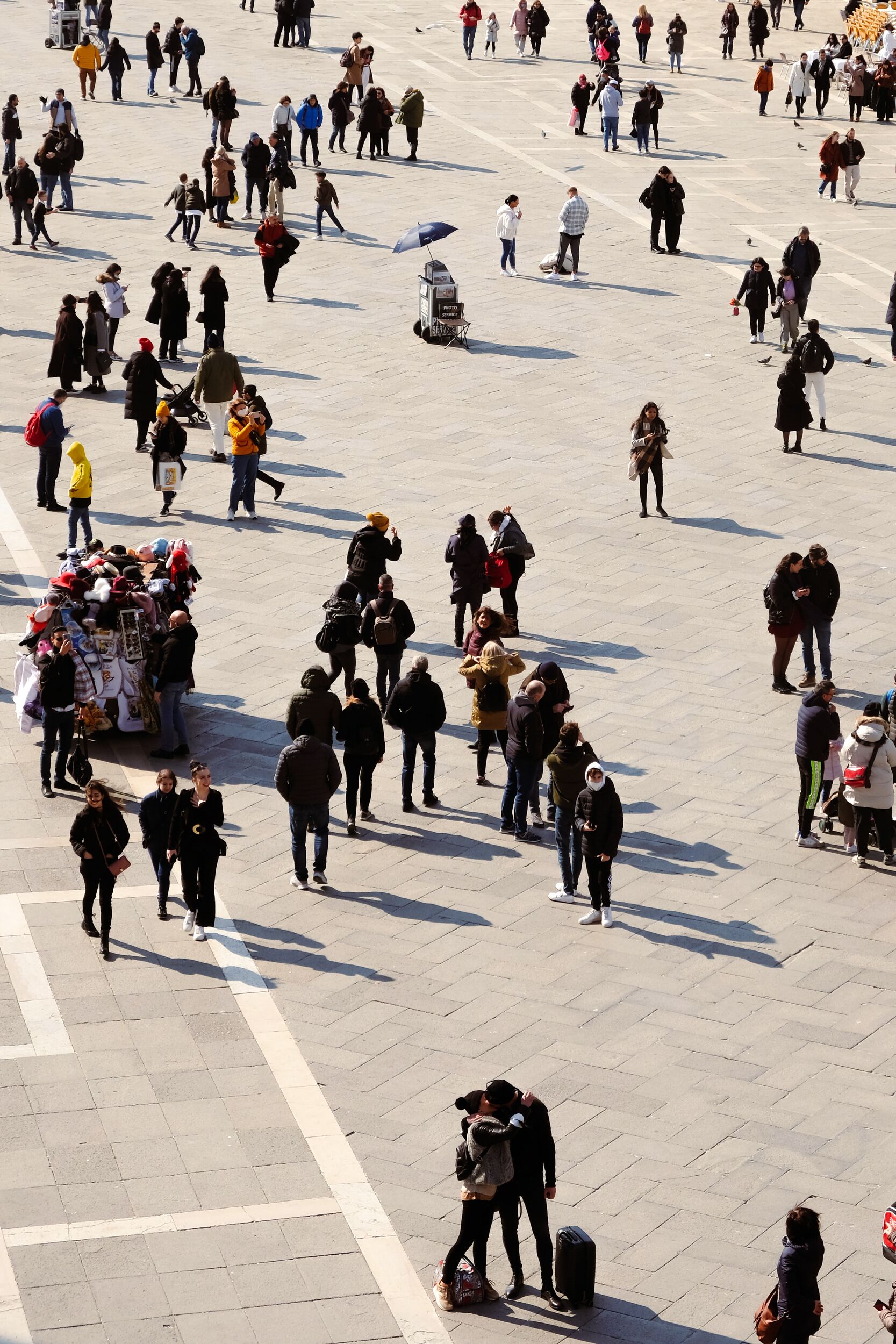
At 1:00pm in February, the sun is strong but my hands are numb. I walk towards Bologna’s Piazza Maggiore carrying a freshly-made piadina and know it will be hard to find a spot on the Palazzo del Podestà steps, where people, like myself, vie for space to eat their lunches. Here, the piazza’s south-facing structure soaks up ample sun before its rays eventually disappear behind the 150-ft tall Basilica di San Petronio across the square.
Piazza Maggiore is bustling at this time of day. A trio of street musicians blow into brass instruments for a small crowd that has gathered around them. A man waves a pink wand that blows large, oblong bubbles while bobbing children wait anxiously to pop them. A little boy chases pigeons, weaving through pedestrians and dodging cyclists. He giggles and screams in bouncing Italian syllables until all of the birds have cleared from the area.
I find a seat on the coveted steps in between two columns that support the Palazzo del Podestà’s colonnade and bask in the subtle relief the sun brings to my frosted fingers. I notice I’ve chosen a seat between two groups of bantering middle-aged Italian men who have congregated on either side of the arch I now bisect. They gesticulate widely and step over my backpack to light each other’s cigarettes. A pigeon pecks at the ground near my feet and I shoo it away only to watch it walk back towards me moments later. A young couple asks if they might sit in the empty space on the steps to my right and I nod—Certo, certainly. 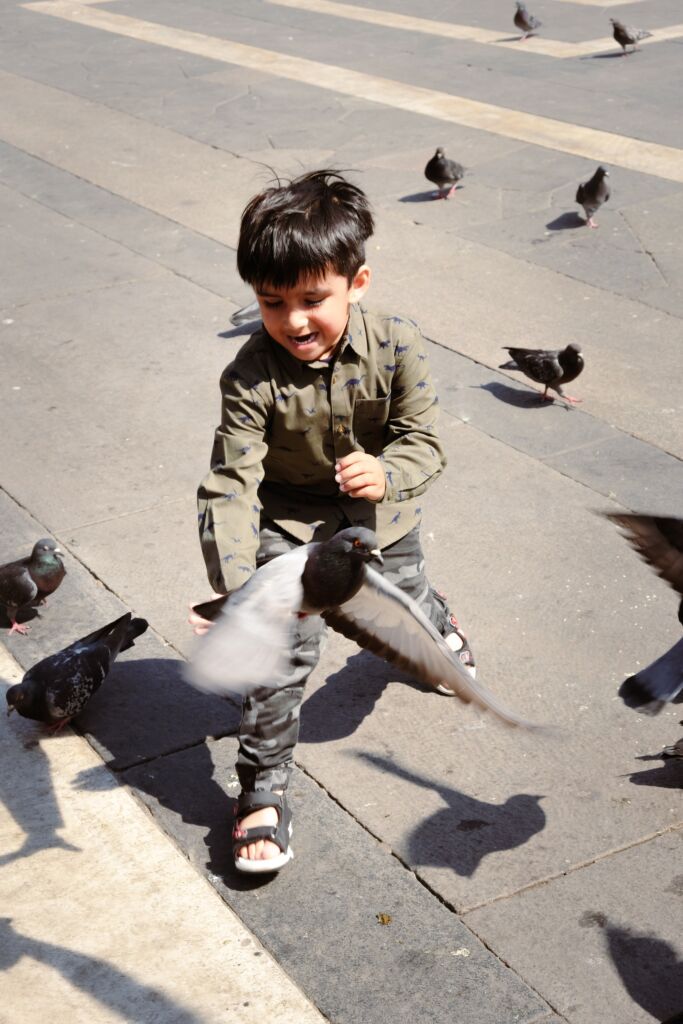
I finish my piadina and take out my journal: I can’t quite explain why a piazza feels different than any other public space, I write, but there’s just something about them that makes other people’s shared moments somehow also feel like your own. In a piazza, one is both listener and musician; spectator and actor; onlooker and participant. The little boy’s laughter and the pigeons’ coos, the older men’s banter and the busker’s melodies, the couple’s whispers and my pencil’s scratches were together the cacophonous sounds of a piazza’s symphony.
The word piazza evolved from the Latin platea, meaning “broad street,” though one could find further significance in that platea is a contemporary Italian word to describe seats in a theater. Its official name was not popularized until the 16th century, but the concept of the piazza can be found as far back as Ancient Rome when officials used the open space in front of the city hall to discuss politics and economics. Finding this open space to be important, Romans decided to build the rest of the city around it, rather than through it; if one were to look at an aerial view of Bologna, they would find Piazza Maggiore to be the flattened seed from which the rest of the raised city grows.
The nearby Università di Bologna draws many students to Piazza Maggiore, where they can be found enjoying an Aperol Spritz or singing along to the street musicians. The piazza is a place to start—or end—the night. “It is there you go when you don’t know where to go,” a young student at the university, Irisa, tells me. There is an “expectation” that you will meet new and interesting people in a piazza, another student, Sara, explains. “I once met an Erasmus student from some place like Lebanon,” she remembers, “I was just standing there, waiting for someone. He had asked me if I knew where a certain thing was. I told him. He asked if I was from Bologna and I told him. There was a good vibe between us, he was also meeting someone but was totally lost. We waited together for 20 minutes, 20 minutes of my life spent talking to this very interesting person. And that was that.”
So you never saw him again? I ask Sara. No, she hadn’t. Danielle DiLeo, an American who met her husband in a piazza, describes the space as “a business card or postcard for the city they are located in,” they are “the easiest place to find but also the place where someone from outside the city would be welcomed.” They are places where one feels safe enough in public to rest their eyes mid-day or to ask a stranger for directions. The encounters one has in a piazza are spontaneous and are often spurred by situations like Sara’s. I knew an American in Italy who didn’t smoke but liked to carry around a lighter as an opportunity to strike up conversation with whoever might ask for it.
Bologna’s Piazza Maggiore is framed by structures in all four cardinal directions creating a quadrilateral space that gives credibility to the English translation of piazza, “town square.” In the north, it is flanked by the arcaded Palazzo del Podestà, a civic building that today houses a wine shop and restaurant popular among tourists and locals alike. During aperitivo, a time between lunch and dinner where Italians get together for drinks, one can sit at the restaurant’s outdoor seating and watch as the evening sun paints warm tones on the piazza’s orange-hued buildings.
As is characteristic of Italian piazzas, a church stands opposite the municipal building. The Basilica di San Petronio is the sixth-largest church in Europe and dominates Piazza Maggiore’s south side. It is accompanied by the much smaller Palazzo dei Notai which, at the time of my visit, was in the process of restoration. The scaffolding was made of a mesh overlay that displayed an image of what the stone Palazzo looked like underneath, an illusion preserving unity.
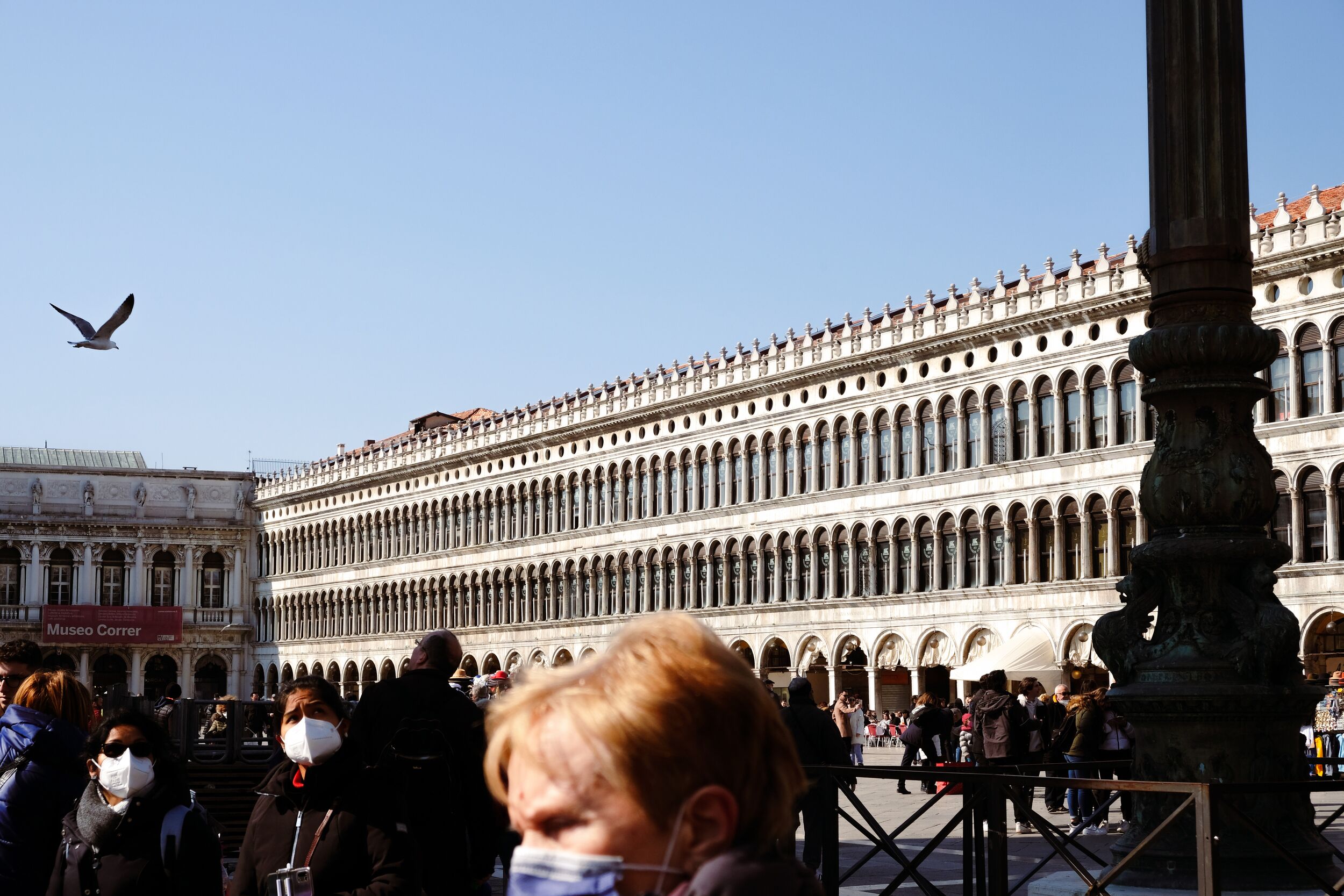
In the east is the Palazzo dei Banchi and in the west is the Palazzo Comunale, both of which feature some of Bologna’s famous porticoes on their façades. The sense of community inside a piazza is shared even within the buildings that flank the town square. It was not uncommon to see families sitting on the upper-floor balconies of the Palazzo dei Banchi, reading books or eating lunch like the rest of us on ground level. Sometimes children would wave from behind the balcony railings, and burst into giggles if someone in the piazza were to wave back.
***
Standing on the Basilica di San Marco balcony in Venice, I have a privileged view of those milling about in the piazza below me. Looking down and facing West, I observed the length of Piazza San Marco—tourists and locals mesh seamlessly, figures loosely grouped but united by this shared space. I capture the moment with my camera. In it: a couple in a passionate embrace, a merchant manning a stand piled with miscellaneous souvenirs, an empty photo station, a group taking a selfie, people enjoying a drink at one of the historic Venetian bars. All of their shadows were cast slim and in the same direction, no matter their figure or where they were facing. The shape of the individual melted seamlessly into the scape of the collective—a community preserved in my camera’s shutter.
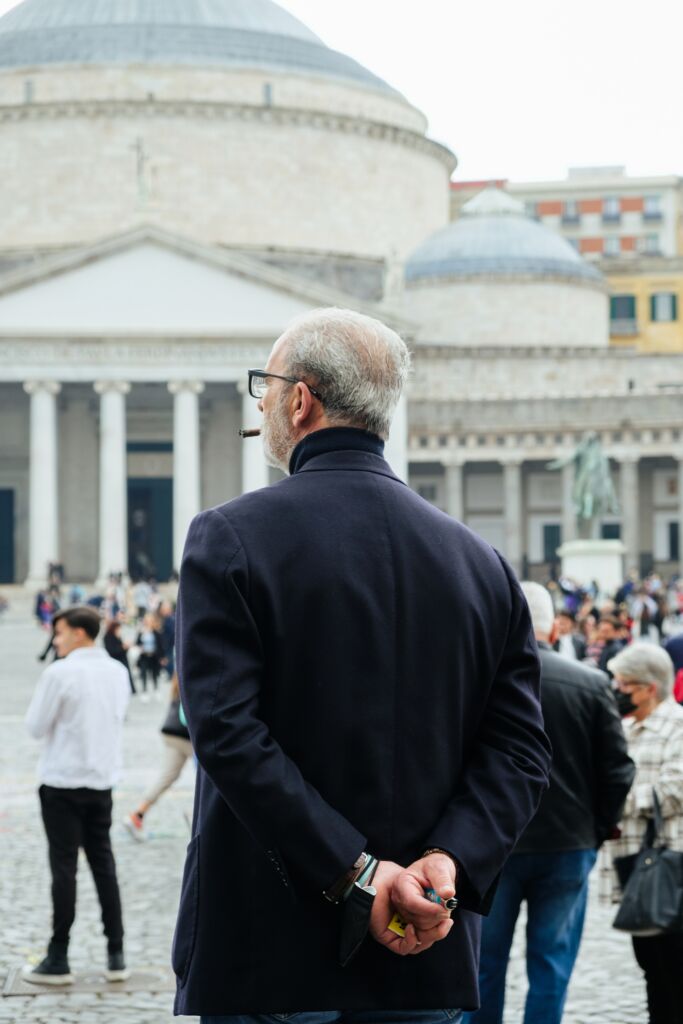 Venice’s Piazza San Marco was first established in the ninth century, though it settled into its current size and form in the 12th century and was paved with its iconic geometric pattern six centuries after that. The Procuratie are three connected buildings that enclose the north, south, and west sides of the square. The Procruatie and Procrutaie Nuove are mirrors of each other and define the square’s length while the more diminutive Procrucatie Nuovissime defines its width. All three sides are decorated with arches that march in symmetry down their façades while a connected arcaded passageway allows pedestrians to walk the perimeter of the square without ever leaving the shade. In the east, the Byzantine Basilica di San Marco demands attention in contrast to the Renaissance-style Procuratie surrounding it.
Venice’s Piazza San Marco was first established in the ninth century, though it settled into its current size and form in the 12th century and was paved with its iconic geometric pattern six centuries after that. The Procuratie are three connected buildings that enclose the north, south, and west sides of the square. The Procruatie and Procrutaie Nuove are mirrors of each other and define the square’s length while the more diminutive Procrucatie Nuovissime defines its width. All three sides are decorated with arches that march in symmetry down their façades while a connected arcaded passageway allows pedestrians to walk the perimeter of the square without ever leaving the shade. In the east, the Byzantine Basilica di San Marco demands attention in contrast to the Renaissance-style Procuratie surrounding it.
Italian painter Canaletto depicts a similar scene in his eighteenth-century work, “Piazza San Marco” (1723-1724). Though our images offer different perspectives—I look out from Basilica di San Marco, while Canaletto appears to face it from across the square—the scenes we capture are remarkably similar. In Canaletto’s work, groups of two to three walk and gesture. Merchants sell goods and children tug at parents’ shirttails. Slim shadows reach north, trailing the Venetians on smooth pavement. The people are arranged in Canaletto’s painting just as they are in my photograph, one must only replace the puffer jackets and beanies with overcoats and breeches to accurately date the spectacle.
The 19th century architect Giuseppe Samonà relates Italian piazzas to a “stone archive,” keeping and logging the memory of those people and things that have seen its grounds. In Bologna, dents in the raised pedestrian platform at the center of Piazza Maggiore were carved by an American armored tank on the day the city was liberated in 1945. As tribute to the historic event, the damage was never restored. One can still run their fingers over the indentation today. Meanwhile in Venice, the pavement of Piazza San Marco laid in 1723 preserves an entirely different history. Andrea Tirali’s geometric patterns run laterally to the Procrutiae and are thought to be the marks of where medieval Venetian merchants once kept their carts.
Piazzas are a space to pass through, but also to convene; a place to discuss politics like the Ancient Romans or pass around a bottle of wine like today’s teenagers. But they are also a place to celebrate.
***
In Naples one Sunday in February, I notice that the closer I walk towards Piazza del Plebiscito, the more confetti dusts the ground and the more children appear in costume. I pass a mother cradling an infant nun dressed in the full habit and suckling a pink pacifier. I pass a young jester, a rainbow fairy, and a 4-foot Lionel Messi. I had unexpectedly found myself in Naples during a festive weekend of Carnevale; and the city-wide celebration was being held in, of course, the largest piazza in Naples. And it has been for centuries.
The Piazza del Plebiscito does not resemble the quadrilateral piazzas I’ve discussed thus far. Instead of four rigid borders, this Neapolitan piazza is enclosed by a curved façade on the east side. In this way, it resembles the world-famous Piazza San Pietro in Rome where two semi-circular colonnades resemble two outstretched arms in an “embrace of fraternity.” In Naples, the body is the Basilica of San Francesco da Paola and the arms are the two impressive column-lined promenades that arch from it.
Some people are dispersed around the center and others cling in groups to the curved wings as I approach the piazza. I watch as a miniature Batman kicks a soccer ball to what looks to be a medieval prince, but the prince misses and the ball bounces towards a young woman clad in tight leather plants and tall black heels who then kicks it back. A little girl cries about confetti that has gotten in her eye and a mother holds her still as she tries to get it out. Both are covered in the shimmery paper, as are many others in the square. There is some stuck to a grandmother’s phone and she swats it away with nonchalance. It is on a young girl’s face and her boyfriend brushes it off. It covers the ground and sits in people’s hair like freshly-fallen snowflakes that stick to eyelashes before they melt.
Long after I had left the piazza and was on the train back to Bologna, I found that confetti was stuck to me, too.
